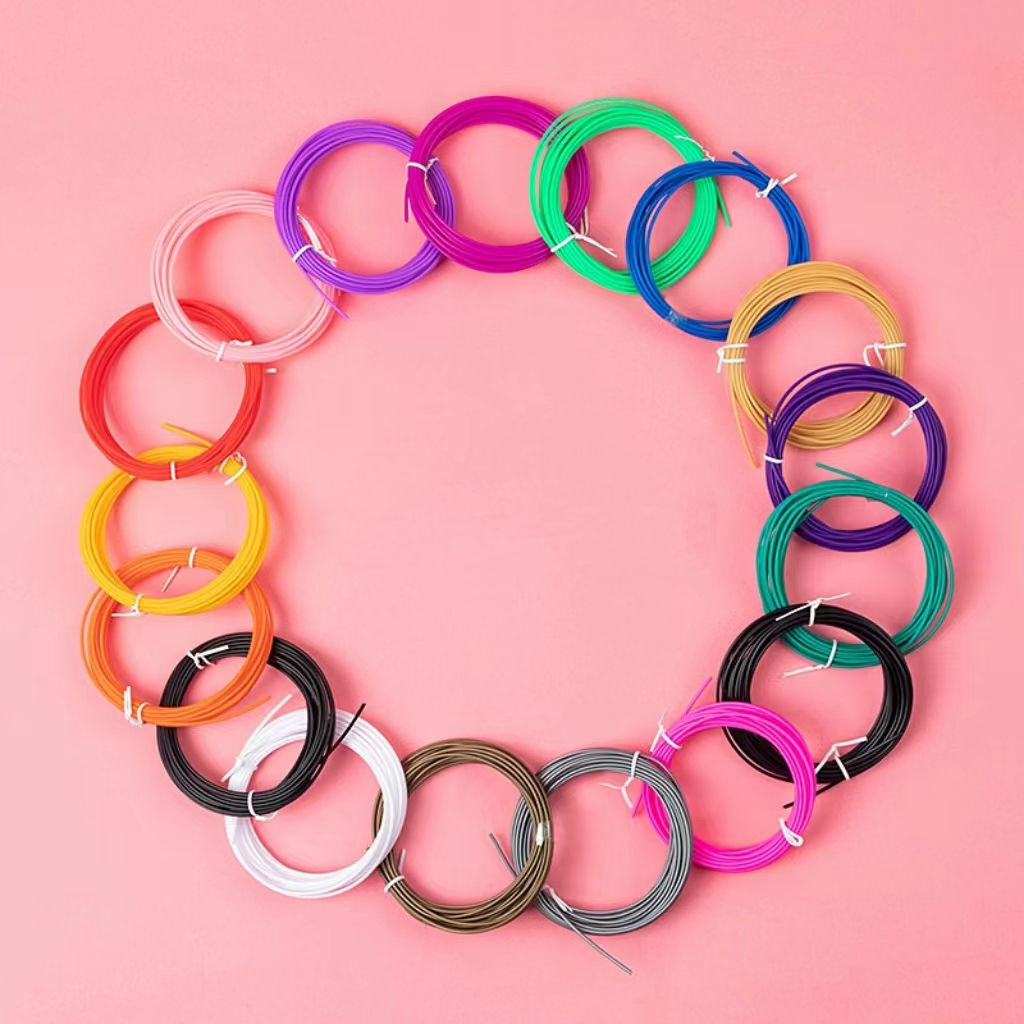5 Key Things You Should Look For When Buying a 3D Pen
Nov 21,2023 | 3D4Create
Are you wondering what to look for when buying a 3D pen? With the increasing popularity of these tools for drawing and sculpting, the market offers a wide range of models with different features and prices. Choosing the right 3D pen can be overwhelming, but fear not! Let's explore the 5 most important factors to consider when selecting your first or upgraded 3D pen.
I. Why Should You Get a 3D Pen for Your Child?
3D pens offer a unique way for kids to express their creativity. Here are several advantages of 3D pens for children.
- 3D pens offer a unique way for kids to express their creativity. Unlike traditional 2D drawing, which can be done with pencils and paper, 3D art allows kids to create dimension and texture in their drawings.
- Using a 3D pen can help improve children's fine motor skills and coordination. When children use a 3d pen, they must hold it in their hand and manipulate it to create their drawing.
- As children create three-dimensional drawings with a 3d pen, they will naturally begin to learn about basic geometric shapes. This can be a fun and educational way to introduce children to geometry.
- When children are creating three-dimensional drawings, they must think about the space around them and how their drawing will fit into it. This can help to improve their spatial awareness and problem-solving skills.
- If your child is creative, they may enjoy using a 3d pen to make gifts for their loved ones. This can be a thoughtful and unique way to show someone you care.

3D Pens can Unleash Children's Creativity
II. Print Quality of a 3D Pen
A 3D pen's print quality determines the precision, detail, and overall aesthetic of your creations. Higher quality 3D pens will produce smoother, more defined objects. Here are the key factors that affect print quality:
1. Resolution and Nozzle Size
The smaller the nozzle diameter, the finer details a 3D pen can print. Entry-level pens typically have 0.4-0.7mm nozzles, medium resolution pens offer 0.3-0.5mm, while high detail professional pens go down to 0.2mm or less. Match the resolution to your needs.
2. Types of Filament Supported
Check filament compatibility, as quality pens support flexible, composite, and high-grade materials such as PCL and PLA for better prints. The optimal 3D pen provides all-metal hot ends and controlled heating to accommodate any thermoplastic.

III. Design and Ergonomics of 3D Pen
A well-designed 3D pen will be comfortable and intuitive to maneuver as you draw. Ideal features include:
1. Size and Weight
Look for a pen sized and weighted to minimize hand fatigue over long periods. Lightweight 3D pens around 25-50g offer the best maneuverability.
2. Comfortable Grip
The pen body should allow you to easily grip and manipulate it at any angle. Curved ergonomic shapes provide maximum comfort and control.
3. Thumb Support
Pens with a thumb rest enable you to achieve finer detailing by stabilizing movements. Test grips to find your optimal comfort zone.

IV. Temperature Control of 3D Pen
Consistent heating is key to smooth 3D pen operation. Check for:
1. Fast Heating
The fastest 3D pens can reach over 230°C in under a minute. Quick heating enables you to start drawing sooner.
2. Adjustable Temps
Variable temperature controls allow customizing for different filament types and thicknesses. Look for a wide 50-300°C range.
V. Price of 3D Pen
3D pens range from under $50 for beginner models to over $500 for advanced pens. Consider:
1. Entry-Level Pens
Affordable basic 3D pens allow you to try out creating 3D objects. They typically only work with PCL, PLA and ABS. However, for kids, PCL 3D pen can be the best choice due to its low melting point.
2. High-End Pens
Investing in a quality pen will grant you better performance, more filament flexibility, and finer resolution results.
3. Cost of Filament
Check filament prices, as cheaper 3D pens often have proprietary spools that cost more per gram.

VI. Brand and Reviews
Stick with established brands offering warranty support. Verify quality through:
1. Manufacturer Reputation
Well-known 3D printing companies like 3D4Create and MYNT3D are reliable picks for supported pens.
2. Customer Reviews
Look at user feedback and average ratings. Higher rated 3D pens typically outperform their price tier.

FAQs:
1. What temperature range should you look for in a 3D pen?
Look for a pen with a wide, adjustable temperature range to handle various filament types. Ranges between 60°C to 240°C allow flexibility. PCL 3D pen with a temperature range from 60°C to 70°C can be the best choice.
2. Does the 3D pen's material matter for quality?
High-quality pens use metal housing and gears. Plastic pens can warp or crack over time. Metal construction improves durability.
3. What safety features should 3D pens have?
Key safety features include auto shut-off after inactivity, lock modes to prevent accidental use, low temperature warnings, and protection from hot nozzles.
See Also:
How to Use 3D Pen? A Beginner's Guide
PCL vs PLA 3D Pens: A Comparative Guide to Getting the Right 3D Pen
What is the difference between a 3D pen and a normal pen?


